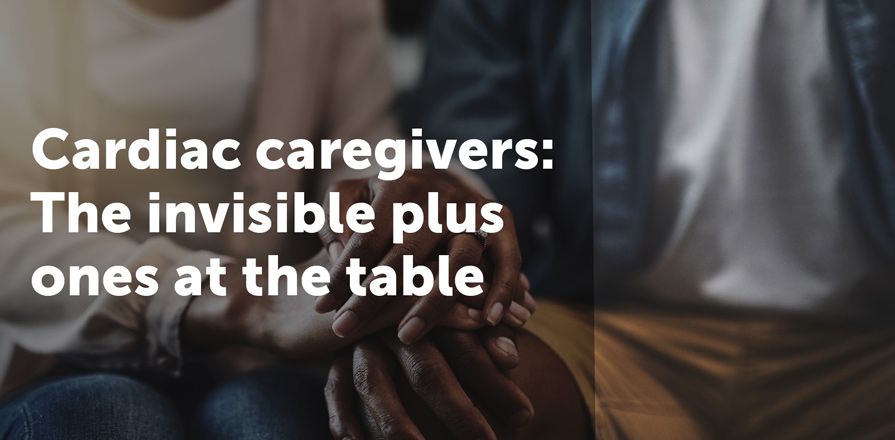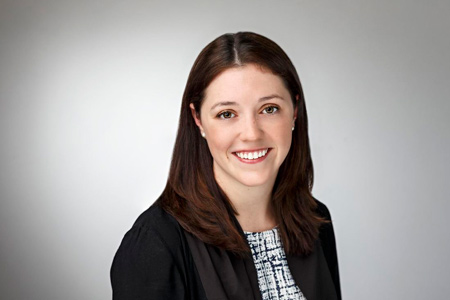Cardiac caregivers: The invisible plus ones at the table

It is abundantly clear caregivers need more support.
Tending to a sick loved one can be fulfilling, and it can bring deep satisfaction to a caregiver. Paradoxically though, staff at the University of Ottawa Heart Institute (UOHI) believe caregiving—and the psychological, emotional, physical, social and financial stresses that may come with it—also poses health risks for the caregiver. Mounting evidence now suggests caregivers (those who provide informal, unpaid care to a loved one with a chronic condition or disability) may be at an elevated risk for developing cardiovascular disease (CVD) themselves. Should healthcare professionals do more to monitor and screen changes in caregivers’ health status? Would this help to promote the health of both patient and caregiver?

In addition to her role as a psychologist and scientist at the Heart Institute, Dr. Tulloch is also a member of the UOHI Heart Transplant Team, the Women’s Heart Team, and she is an advisor to the Canadian Women’s Heart Health Centre.
“It is abundantly clear caregivers need more support,” said Dr. Heather Tulloch, a clinical, health, and rehabilitation psychologist, scientist, and director of the Cardiovascular Health Psychology and Behavioural Medicine Laboratory at the UOHI. Tulloch is the senior author of a narrative review published last month in the Canadian Journal of Cardiology that explores the direct (i.e., physiological) and indirect (i.e., behavioural, emotional) factors linking caregiver distress to caregivers’ own risk for developing CVD.
“Our review highlights the fact that caregivers—‘cardiac’ caregivers and spousal caregivers in particular—may have increased cardiovascular risks without proper support to manage their stress,” said Dr. Karen Bouchard, the article’s first author, and a postdoctoral fellow in the Division of Cardiac Prevention and Rehabilitation at the UOHI. “It’s imperative we acknowledge the stress many caregivers experience, so they don’t become the next generation of cardiac patients.”
In their review, Bouchard et al. report those who provided “high-intensity caregiving” (i.e., upwards of 14 hours per week) doubled their incidence of hypertension (high blood pressure), a risk factor for CVD. Recent research also indicates that caregivers are more likely to continue smoking, consume diets high in saturated fats, exercise and sleep less, and practise less self-care than non-caregivers.
Spousal caregivers are at an even heightened risk, said Tulloch, largely due to the similar lifestyle factors shared with their patient partners, and their tendency to value their patient partner’s needs as greater than their own. In addition, changing spousal roles, the dissipation of a sense of partnership, worsening sexual problems, and caregiver burden—common characteristics observed in spousal caregiver-patient relationships—can erode the quality of the relationship, which can further contribute to a caregiver’s distress.

Dr. Karen Bouchard and her colleagues in the Division of Cardiac Prevention and Rehabilitation are developing a guide for caregivers to provide patients and loved ones with education about how to live well with cardiovascular disease.
Tulloch and Bouchard said, “The development of practical approaches to enhance caregiver-patient relationship quality through secondary prevention programs, and the need to evaluate the effects of those interventions on patient and caregiver health outcomes is a necessary next step.”
Tulloch and colleagues are currently evaluating this concept through the UOHI’s Healing Hearts Together curriculum, an eight-week relationship-enhancement and educational program for patients and partners to learn about their relationships and heart health as a team, and in a group setting. Participants share their unique experiences with heart disease with partners and peers and learn to communicate their need for connection and reassurance.
Early reports of the program are confirming improvements in relationship quality, mental health, and select quality of life measures among participants, however, a controlled evaluation of the impact of the program on cardiovascular risk factors is still underway.
The Healing Hearts Together program at the UOHI may represent a necessary foot forward. “The conversation on caregiving is evolving,” said Bouchard. “We’re becoming more aware of the risks, but we can be doing more to help these individuals.”
“For the most part, the system treats caregivers like the plus one at the table,” said Dr. Tulloch. “They come to the table, they occupy a seat, but no one is even looking at them, never mind having a conversation with them.”
Read “Reducing Caregiver Distress and Cardiovascular Risk: A Focus on Caregiver-Patient Relationship Quality,” by Bouchard, et al., and the accompanying editorial, titled “Caregiver Burden and Cardiovascular Disease: Can We Afford to Keep the Health of Caregivers in Canada Invisible?” by Monica Parry for more information.
Dr. Tulloch and colleagues are actively recruiting UOHI patients and their spousal caregivers to participate in the Healing Hearts Together program. For more information about how to participate, please call Melissa Malette at 613-696-7000, ext. 15406 or e-mail couples@ottawaheart.ca.
A comprehensive guide for caregivers of patients at UOHI is currently being developed. You can follow the University of Ottawa Heart Institute Patient Alumni Association on Facebook and find links to important caregiver resources on their website.
